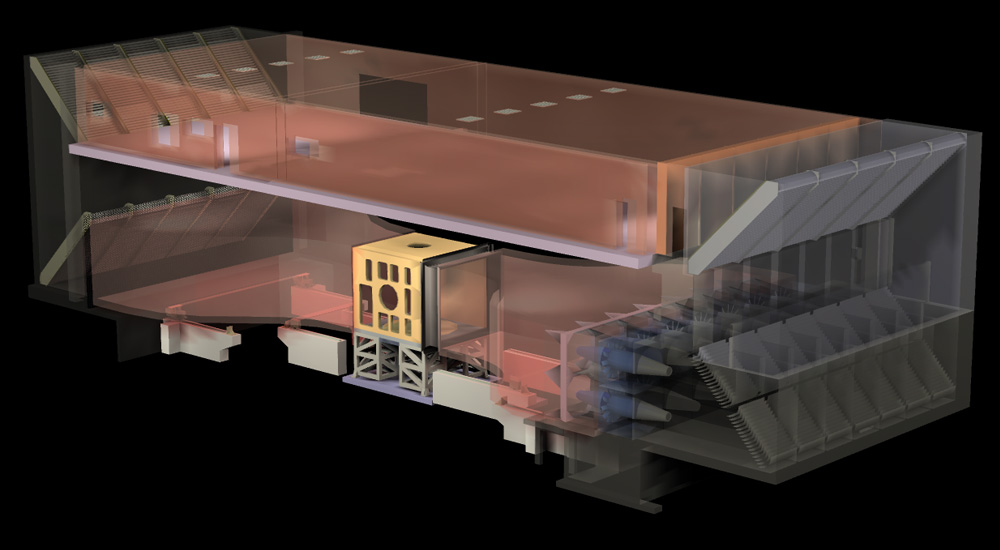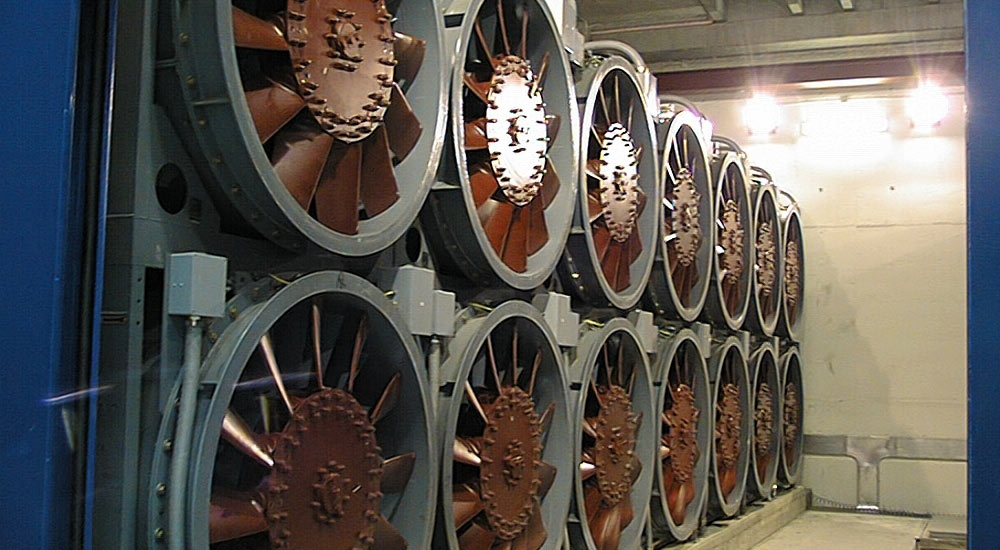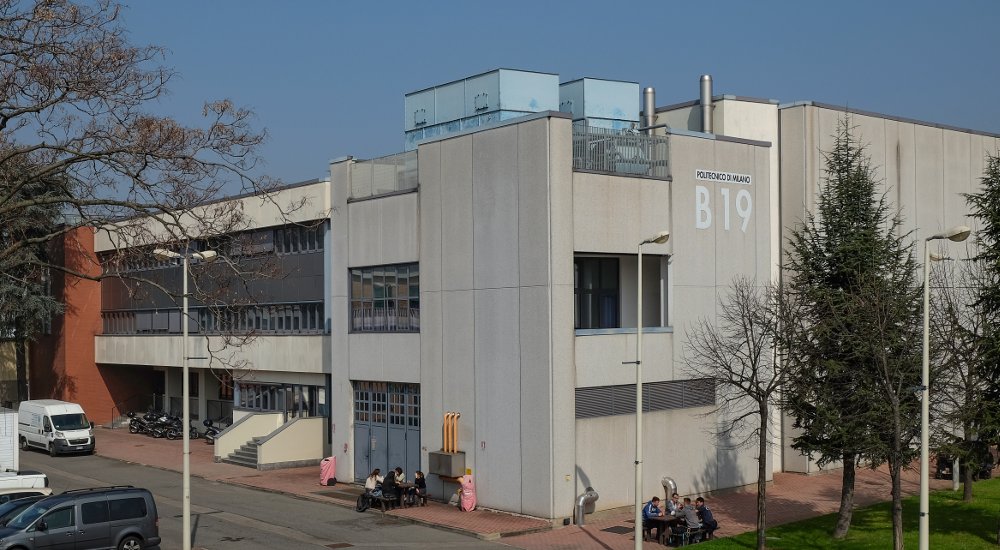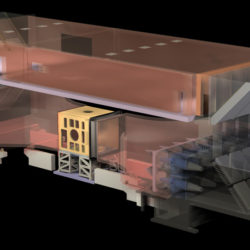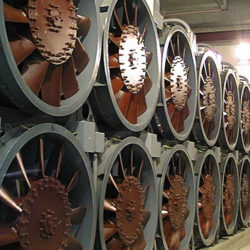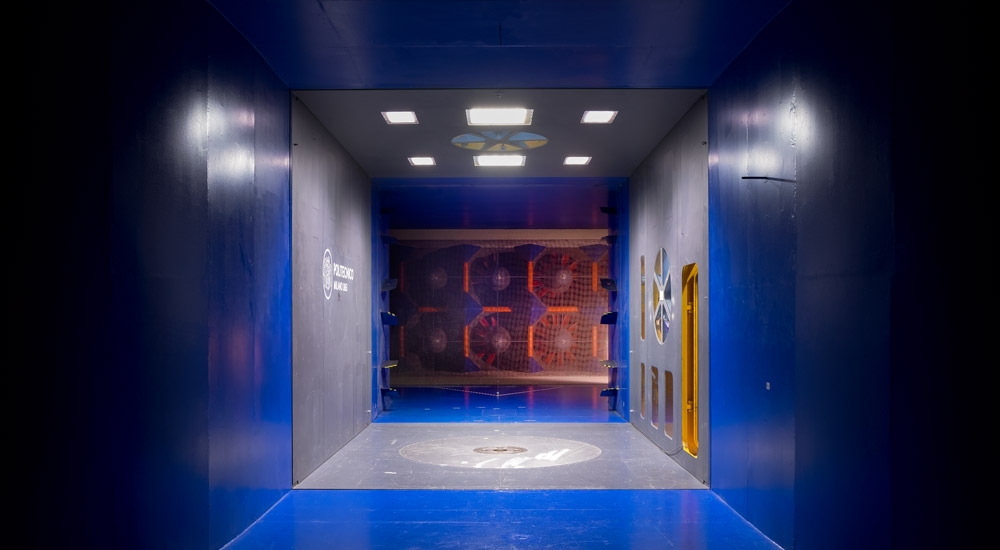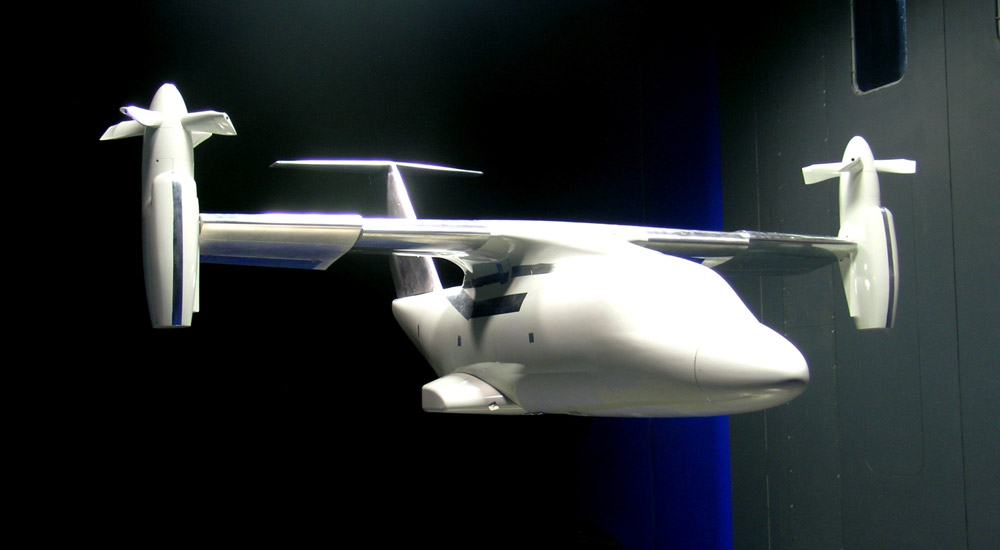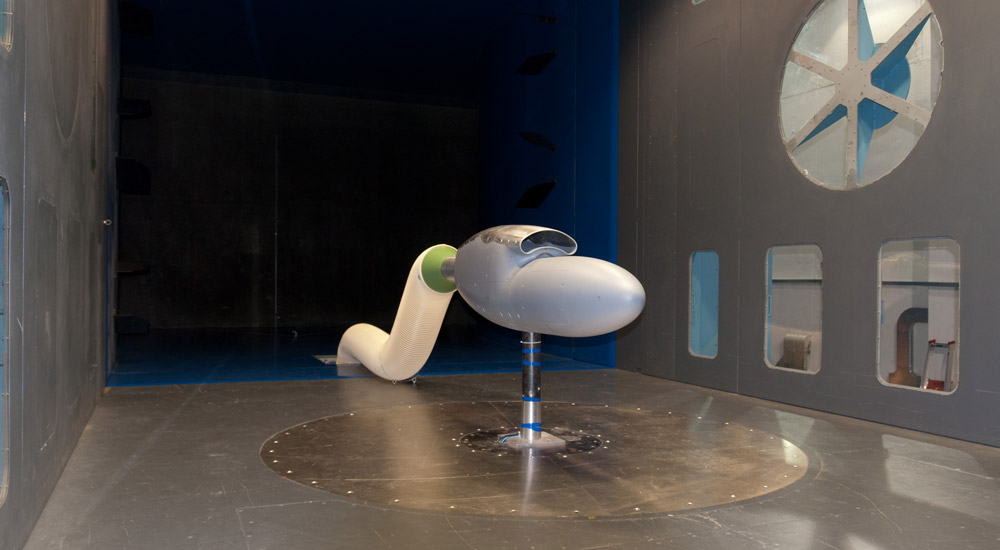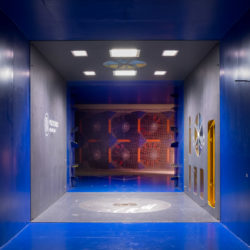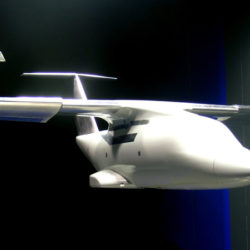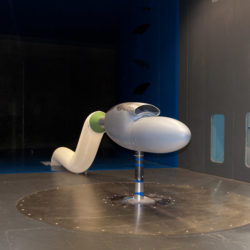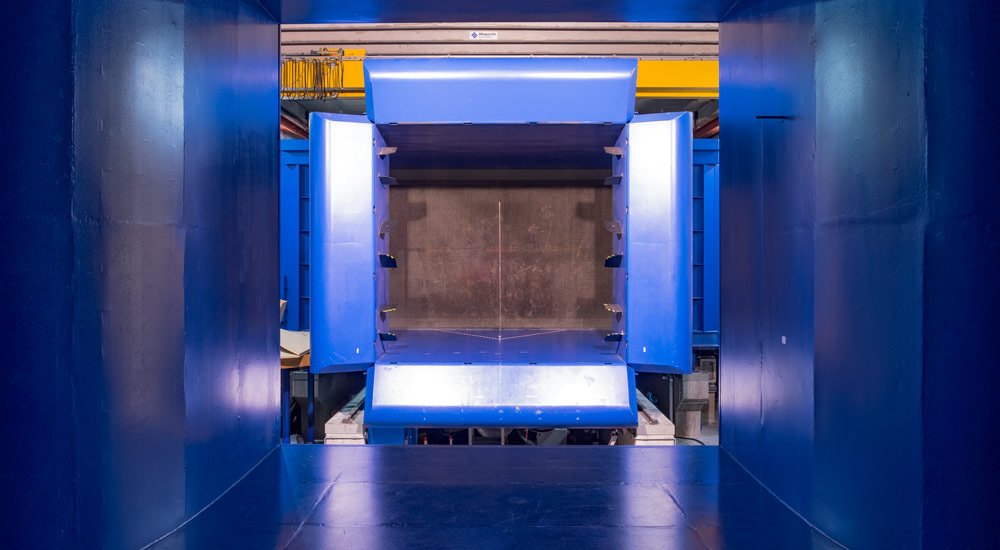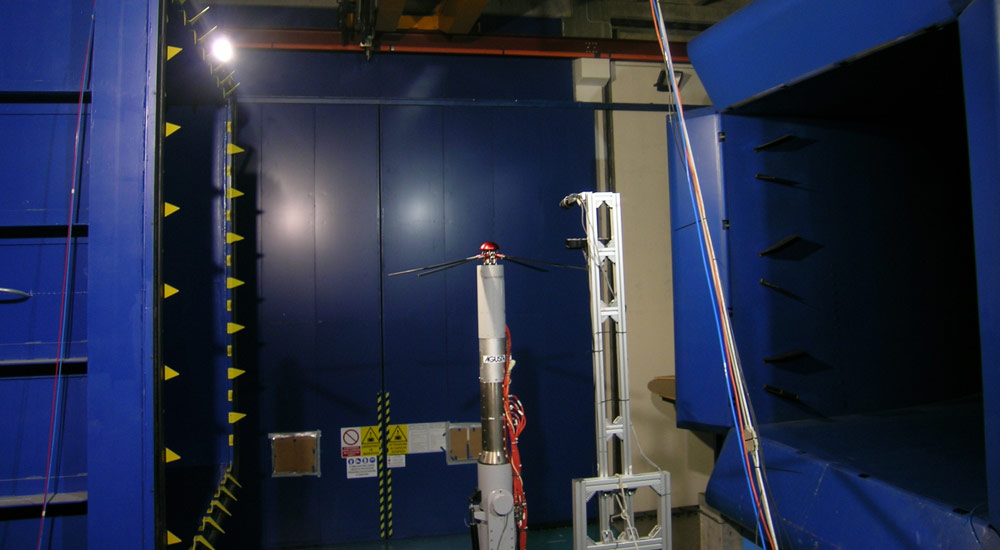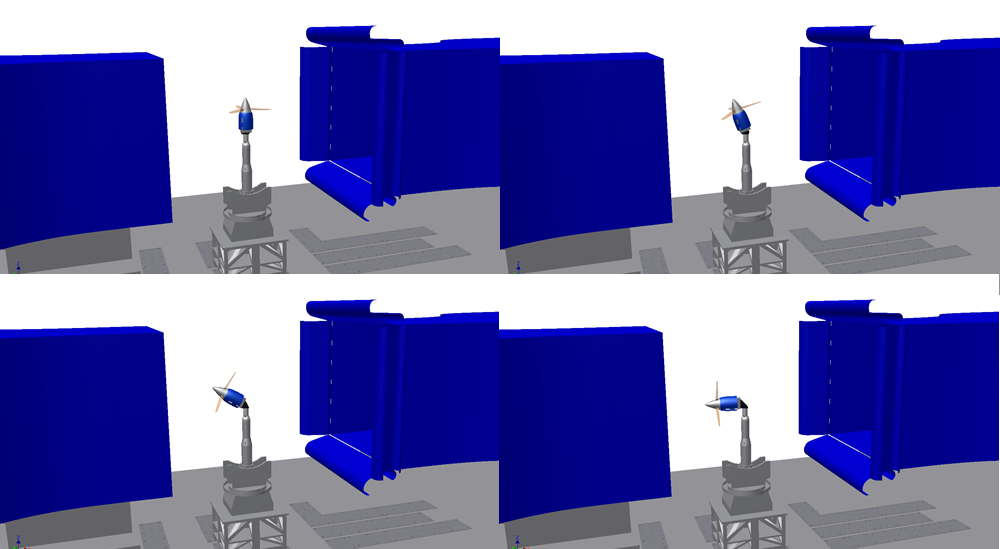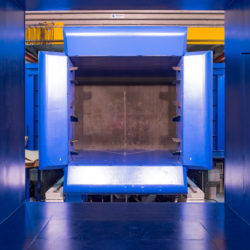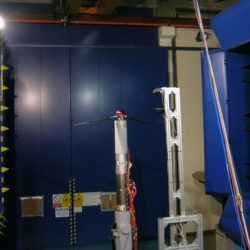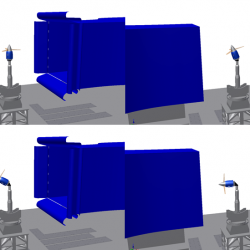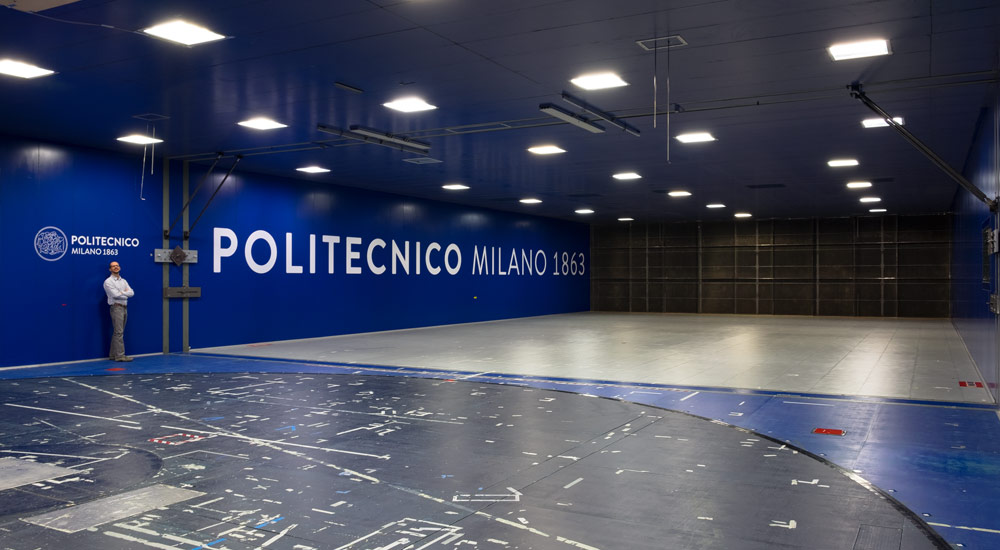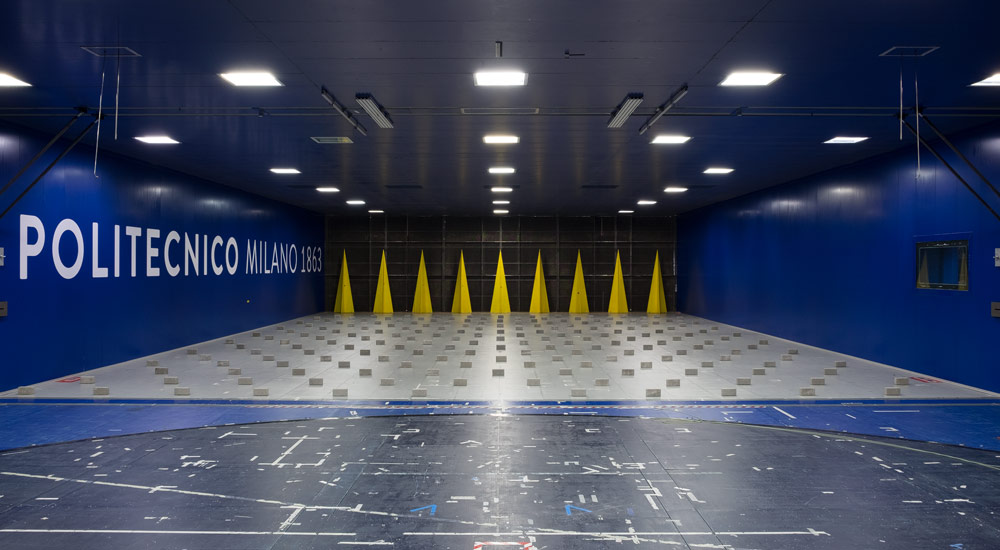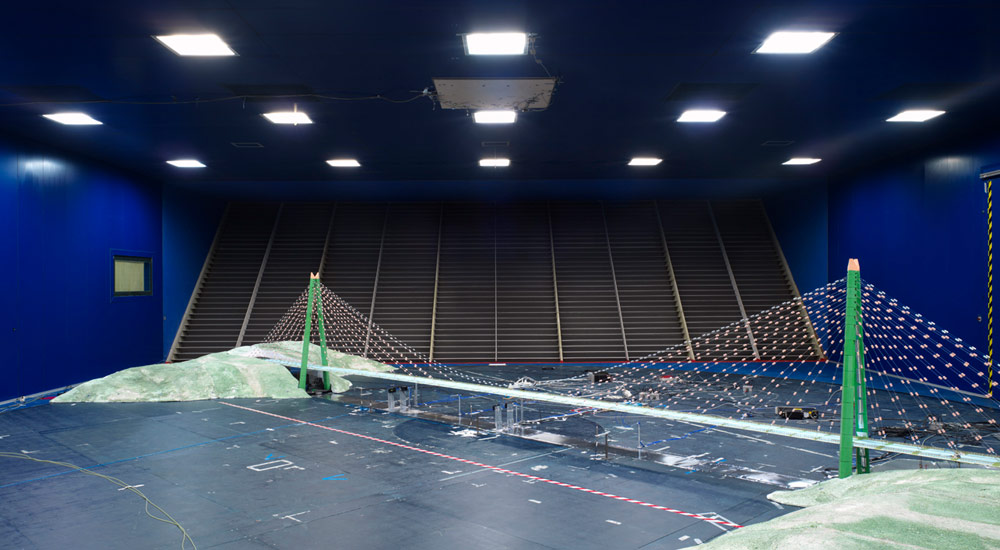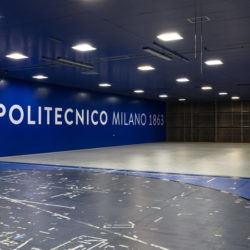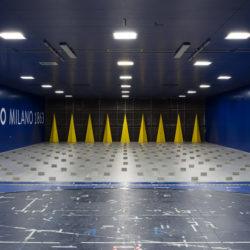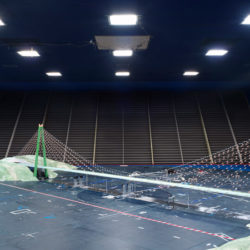GVPM Politecnico di Milano Wind Tunnel
Layout
GVPM is a special closed-circuit wind tunnel, arranged in a vertical layout with two test rooms located on the opposites sides of the loop. The first one is located in the lower part of the loop and is suitable for Low Turbulence tests. The second one, bigger, is located in the upper part of the loop and is intended for civil engineering testing (the Boundary Layer Test Section). Due to this unique feature, GVPM offers the widest possible range of test arrangements and alternatives. The facility is powered by a flow generator array of 14 1.8m diameter, 100kW, fans, for a total power of 1.4 MW. The fans are organized in two rows of seven 2x2m independent cells. Independent inverters drive the fans allowing for continuous control of the rotation speed of each fan to obtain the desired wind speed in the test section.
After the fans two corners fitted with vanes conducts the flow to the upper level of the facility in the opposite direction. The flow is than cooled by a heat exchanger that is placed just downstream of bend number 2 and, after a grid, enters the boundary layer test section.
A second set of two corners fitted with vanes conducts the flow back to the lower level where, after a 2 meters long settling chamber, it passes a honeycomb screen and a set of three different porosity wire nets to reduce axial and lateral turbulence and to promote a more uniform axial flow. A two-dimensional contraction cone with area ratio 3.46:1 reduces the duct section to fit the low turbulence test section size. Finally a short diffuser expands the duct section back to the fans array size.
The optimization and check of the facility layout and components design has been achieved with the help of a 1:9 scale powered tunnel model that was modified several times up to the final design. This model is currently available and used as a check for modifications to the full scale tunnel and to design testing devices in a reduced scale before realizing them for the large tunnel.
- 4m wide x 3,84m high x 6m long Low Turbulence Test Section, max wind speed 55m/s
- 4m wide x 3,84m high x 5m long Open Jet Test Section, max wind speed 55m/s
- 13,84m wide x 3,84m high x 35m long Boundary Layer Test Section, max wind speed 16m/s
- Available instrumentation and devices.
Low turbulence test section
The Low Turbulence test section is 4m wide, 3.84m high and 6m long. It is possible to perform tests in a closed test section and in an open jet.
The maximum wind velocity is 55m/s and the turbulence level is less than 0.1%. It is possible to remove the whole section from the airflow circuit allowing for an off-line setting-up of the test. There are two inter-changeable test sections to prepare a new experiment while the wind tunnel is running.
The test section is equipped with a 2.5m diameter turntable and a traversing system behind the model’s location, suitable for wake measurements. There are several model supports equipped with a positioning system in order to vary the incidence angle.
- Overall dimensions: 4m wide x 3,84m high x 6m long
- Maximum wind speed: 55 m/s
- Mean velocity variations in the test section: 0,25%
- Turbulence intensity: 0,1%
- Turntable: 2,5m diameter
Typical activities:
- Aircrafts Helicopters
- High-speed trains
- Vertical and horizontal axis small and micro wind turbines
- Sport aerodynamics
- Bridge sectional models high Reynolds number tests.
Open jet test section
The Low Turbulence test section can operate also in Open-Jet mode. Open-jet testing is well suited for tests on helicopters rotor.
- Jet dimensions: 4m wide x 3,84m high x 5m long
- Maximum wind speed: 55m/s.
Typical activities:
- Helicopters
- Vertical axis small and micro wind turbines
- eVTOL propellers (conversion phase).
Boundary layer test section
The large Boundary Layer Test Section is 13.84m wide x 3.84m high, and is specifically designed for wind engineering tests on civil structures scaled models. The maximum wind speed is 16m/s and the turbulence index in smooth flow condition is about 2%. The 35m long, constant section test room enables the setting up of upstream active or passive turbulence generators to simulate the atmospheric boundary layer, with turbulence intensity that can be higher than 35%. Several layouts of spires and floor roughness elements makes possible to reproduce different terrain roughness length categories in a wide range of geometric length model scales.
The model to be tested, together with the related environment, is set-up on a 13m diameter turntable, included in the wind tunnel floor, allowing an easy wind incidence angle change. A floating floor allows for a clean model set-up, living all the instrumentation cable connections out of the flow.
- Overall dimensions: 13,84m wide x 3,84m high x 35m long
- Maximum wind speed: 16 m/s
- Mean velocity variations in the test section: 5%
- Turbulence intensity: 2% (smooth flow conditions) / Up to 35% (atmospheric boundary layer simulation)
- Turntable: 13m diameter.
Typical activities:
- Aeroelastic models of long span bridges
- Bridges static and dynamic sectional models
- High and low-rise buildings
- Large roof structures
- Wind turbines scaled models and wind farms Sailing yachts.
Available instrumentation and devices
- 6 components internal and external force balances (RUAG, various)
- 6 components toroidal load cells for propellers and helicopter rotors thrust measurements
- Up to 512 ports on multi-channel simultaneous pressure scanning system (PSI, several pressure ranges)
- High sensitivity miniature pressure transducers (Kulite, various)
- Displacement transducers and accelerometers for tests on dynamic and aeroelastic models
- 3 component anemometry (hot wire, multi-hole pressure probes)
- Particle image velocimetry (PIV)
- 2 component Laser Doppler Velocimetry
- Infrared Thermography for detection of laminar-to-turbulent boundary layer transition
- Automated flow traverse rigs
- Flow visualization (smoke, tufts, oil)
- Video and image recording devices
- High-speed cameras
- Electric and hydraulic motors for powered models
- Suction system for aeronautical engines air intake performance testing
- Active harmonic turbulence generators for admittance function evaluation
- Twisted flow generator
- Compressed air supply

